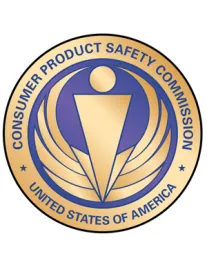On Oct. 14, 2015, the Consumer Product Safety Commission (CPSC) issued a direct final rule amending rules promulgated under the Consumer Product Safety Act (CPSA). First, the CPSC clarified its Component Part Testing Rule, 16 C.F.R. § 1109, to make clear that the special testing requirements outlined in Subparts B and C of the rule only apply to the products specified in those Subparts. All other products may follow the testing procedures outlined in Subpart A. Second, it also clarified that children’s textiles that have treatments and applications consisting entirely of dyes are not subject to third-party lead testing. The amendments also update a reference to the current Standard Consumer Safety Specification for Toy Safety, ASTM F963-11, as well as CPSC’s latest guidance regarding the component part testing for phthalates, both of which have been revised since the rules were last issued.
The CSPA’s Component Part Testing Rule, 16 C.F.R. § 1109, was promulgated by the CSPC in November of 2011 as a means of providing flexibility for testing and certifying consumer products pursuant to Section 14 of the CPSA. Subpart A of the rule provides general requirements for component part testing. Subparts B and C provide additional conditions for testing paint, lead content of children’s products, phthalates in children’s toys and child care articles, and composite testing. The rule was not intended to limit component part testing to the circumstances outlined in Subparts B and C; however, the rule was unclear. The revision makes plain that the restrictions in Subparts B and C apply only to their specifically referenced products. Manufacturers can use the procedures outlined in Subpart A for other products subject to the CPSA.
The CSPC has previously determined that dyes and dyed textiles do not contain lead and are therefore exempt from third-party lead testing for children’s products. However, its rule exempting dyed products was ambiguous as to whether the use of certain application techniques always necessitated testing. The change to 16 C.F.R. § 1500.91(d)(7) makes clear “that textiles that have treatments and applications consisting entirely of dyes do not exceed the lead content limits, and are not subject to the third party testing requirements for children’s products, so long as those materials have not been treated or adulterated with materials that could add lead.” Amendment To Clarify When Component Part Testing Can Be Used and Which Textile Products Have Been Determined Not To Exceed the Allowable Lead Content Limits, 80 Fed. Reg. 61729, 61731 (Oct. 14, 2015) (amending 16 C.F.R. § 1500). The intent is to ease the burden of third-party testing for products that are known not to contain any detectable lead levels.
Two other revisions update references to outside guidance that have changed since 16 C.F.R. § 1109 first went into effect. Section 1109.11(a) is changed to reference the current mandatory Standard Consumer Safety Specification for Toy Safety, ASTM F963-11. Similarly, section 1109.13 adds new CSPC guidance as to when a certifier may rely on component part testing for phthalates in children’s toys and child care articles. The revision brings the provision concerning phthalates inline with the provision concerning lead (section 1109.12). The change is designed to help certifiers understand which components are inaccessible and do not need to be tested for phthalate content.
All of these amendments are clarifications to existing rules and do not make any substantive changes. As such, there are no new obligations. The Commission issued the amendments as a direct final rule that becomes effective on December 14, 2015, unless a significant adverse comment is received.



 />i
/>i
